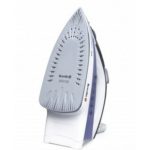A properly chosen iron can be an effective helper for you. With such a device, ironing and ironing clothes, bedding, home textiles will only be a joy. If your iron heats up quickly, does not tire your hands and easily glides over the fabric - it means you have made the right choice. If you are just dreaming about buying, you should know which iron soleplate is better, because the quality and duration of your household appliance depends on it.
We will tell you in detail about the materials from which the soles are made, consider all the pros and cons and determine which iron sole is the best?
What are our irons made of?
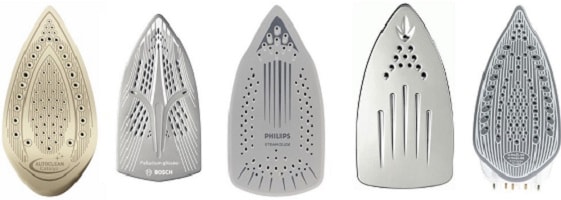
More precisely, what material is used to make the soles? The most common are only 5. These are:
- aluminum;
- stainless steel;
- ceramics;
- teflon;
- titanium.
These coatings should provide uniform heating, easy sliding on the fabric and a gentle effect on the product itself. In addition, it is optimal when it heats up quickly and holds the set temperature for a long time, and ideally - if the sole material of the iron is damage-resistant and lightweight. Let's find out how the listed materials meet our needs and try to find out which sole it is better to buy an iron with.
![]() See also - Top 10 best overlock and sewing machines - rating of the year
See also - Top 10 best overlock and sewing machines - rating of the year
Aluminum
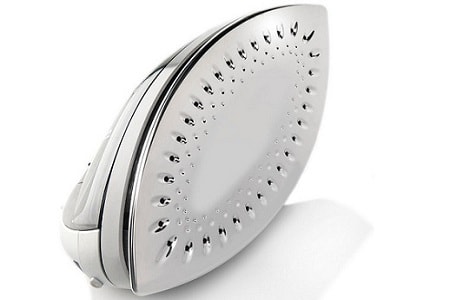
It is lightweight and cheap material. Small home appliance manufacturers often use it to make soles. Such a device will heat up very quickly and cool just as quickly. A quick warm-up will save energy, and the fact that the iron cools quickly after work will save your time.
Smooth, undamaged aluminum glides smoothly over the canvas and evenly heats up. It is easy to clean it at home - with special pencils or improvised means - peroxide, salt, ammonia, soda, etc. But this material is quite soft and sensitive to scratches and damage. If such an iron soleplate gets scratched on buttons, zippers or other decorative elements, then it will be almost impossible to remedy the situation, and in the place of damage, sliding on the fabric will deteriorate significantly.
In order to avoid this annoying drawback, the best manufacturers cover aluminum soles of devices with various spraying. The simplest and most effective is the use of anodized aluminum, more precisely, the coating of aluminum with an oxide film. Philips calls this coating Anodilium, while Braun calls Careeza or Eloxal. Gorenje engineers produce sol-gel coated work surfaces - Nano Tech. These measures improve and complement the advantages of aluminum platforms. Such irons just as quickly heat up and easily glide over the product, but they do not overheat the fabric, do not scratch, and in general they serve longer and more productively. Which brand to give preference to is up to you.
![]() See also - How to choose an iron - rating years in quality and reliability
See also - How to choose an iron - rating years in quality and reliability
Stainless steel
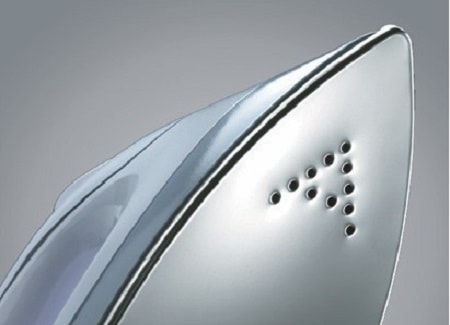
In comparison with the previous material, the stainless steel on the iron takes a little longer to warm, but it also keeps the glow temperature longer, which is convenient during ironing. The indisputable advantage of this material is its strength. You cannot scratch a stainless platform with a button or lightning. Not afraid of stainless steel and corrosion. A smooth, polished surface will glide over any canvas, like clockwork. Your clothes will not shine from such an iron, and cleaning a stainless steel is easy. It is such a platform that is considered almost the best iron soleplate. However, such devices are more weighty, especially women's hands feel this heaviness.
Reputable manufacturers come up with new coatings based on stainless steel. This is done to further improve the benefits of such a work surface. Especially popular and famous are the coatings of Saphir (Braun), Platinium (ROWENTA), Inox (Bosh), SteamGlide (Philips) or chrome surfaces from Moulinex, enameled - from Siemens, nickel - from Panasonic. These are not just marketing ploys to increase sales, but an effective way to increase the thermal conductivity of stainless steel, slightly reduce its weight and maximize the strength and ease of sliding.
It is worth noting that the leaders of the price-quality category over the past couple of years of sales are equipped with stainless platforms, and this says a lot.
![]() See also - Which is better to choose - iron or steam generator?
See also - Which is better to choose - iron or steam generator?
Ceramics
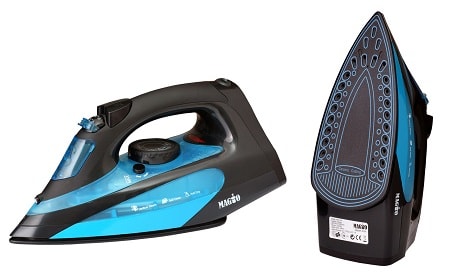
One of the inexpensive options is an iron with a ceramic sole. Ceramics combines both pros and cons. On the one hand - low cost, attractive appearance, flawless sliding and ease of surface maintenance. You can clean the ceramic work surface with an ordinary kitchen sponge. Such an iron will not burn through the canvas, will not make puffs or unnecessary folds on it. But on the other hand, it is a very fragile material that undergoes mechanical damage and cracks. A small chip will instantly affect the operation of the device.
However, manufacturers are in no hurry to give up this material. The ceramic soleplate is used by renowned industry leaders like Tefal, BOSCH and PHILIPS. But most often a combination of ceramics and metal is used. These are Supergliss Actif and Ultragliss Actif (Tefal), as well as the new material in this line - Durilium, this is Palladium glissee (Bosch), a titanium coating from Panasonic. High-quality and inexpensive iron with a ceramic-metal platform can also be bought from the Vitek brand.
Teflon
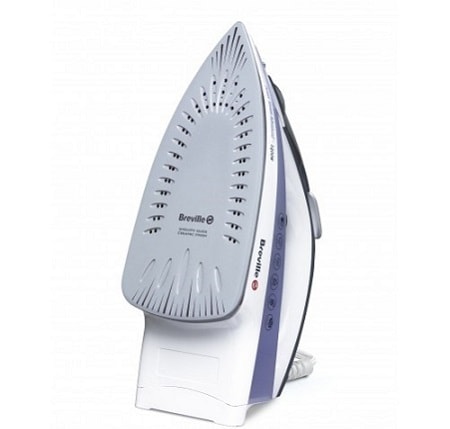
This is the most cost-effective material option for the working area of the iron. Even a classic of the genre. The vast majority of non-stick coatings for brands such as Philips, Kenwood, Tefal and Maxwell are made of Teflon.
The advantages of this material include ease of sliding on the fabric, uniform heating, delicate effect on the canvas, low cost. We will not be silent about the shortcomings. Teflon is extremely easy to scratch. Such a coating will begin to iron your things at times worse and longer, but you can easily buy a new iron with a more durable surface.
Titanium
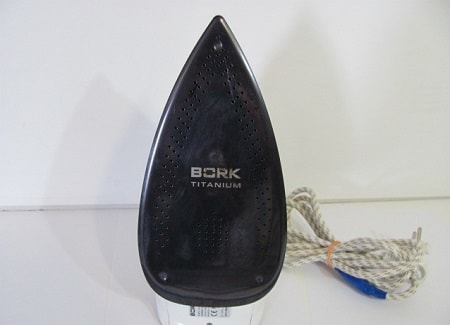
This is the record holder for strength and durability. The first, such soles were presented by the developers from Rowenta. Irons with titanium soles well slide on the fabric, heat up a little longer, but keep the temperature well, they do not greatly tire the hand. It is this material considered the most durable and resistant to damage. But the disadvantage of a titanium work surface is the high cost, since this material is expensive.
Irons with a titanium sole are found in the product lines of Bork, Philips, Panasonic.
Outcome
So, we briefly talked about the most popular materials that are used for iron soles today. Which one to choose - you decide based on which characteristics you prefer and what tasks your device will perform. If you need a compact and lightweight iron - choose aluminum or cermets.Iron linen, cotton, thick fabrics often - buy a heavy iron with stainless steel sole. We need a cheap device - that means Teflon, we need a durable one - that means titanium. As you can see, there is no single answer to the question - which sole of the iron is better?
If you adhere to the rules for using the iron, as well as recommendations for caring for clothes, then any device will serve you for a long time and will always help you look perfect, and working with a serviceable and comfortable iron is always pleasant. Easy ironing for you!
See also:


